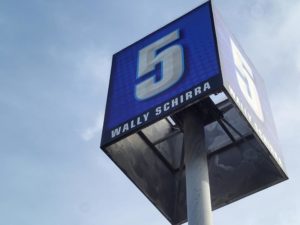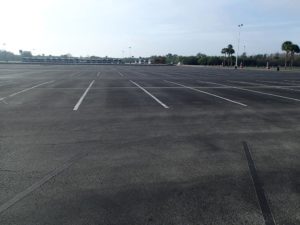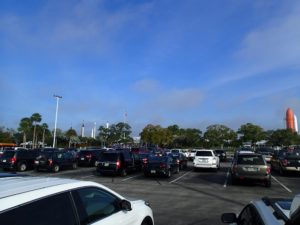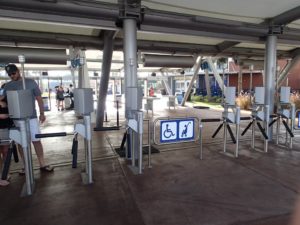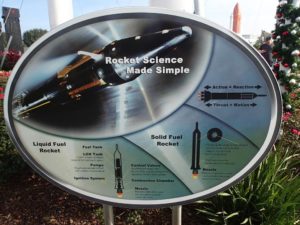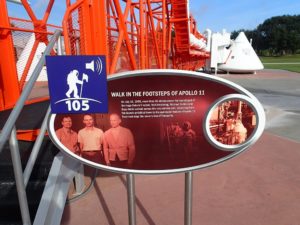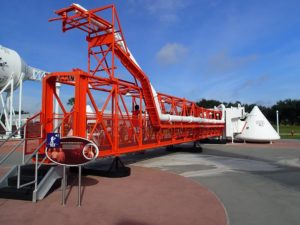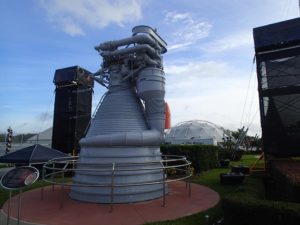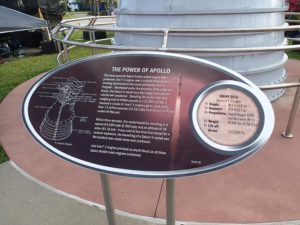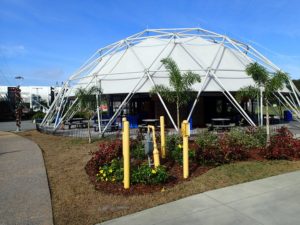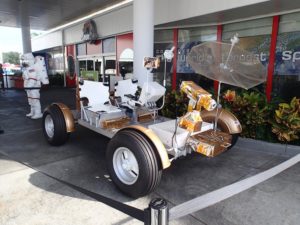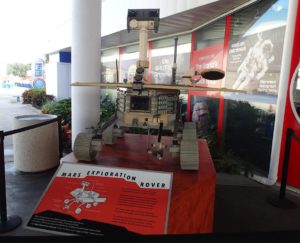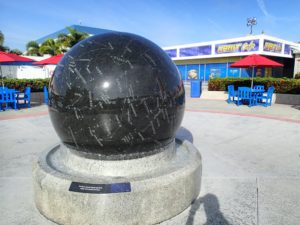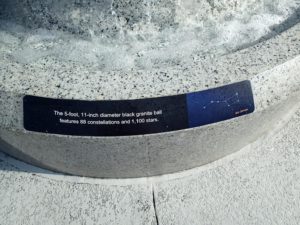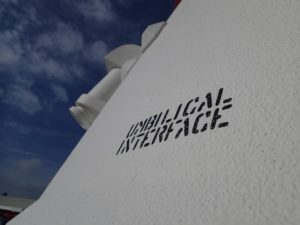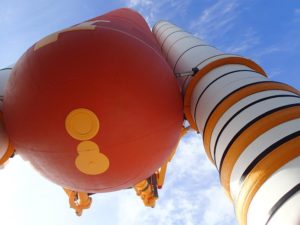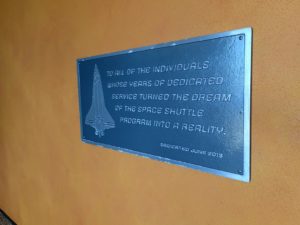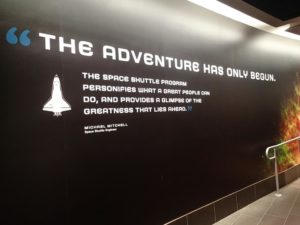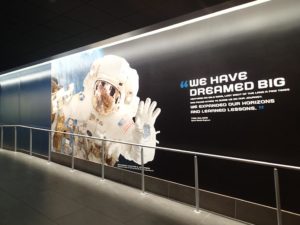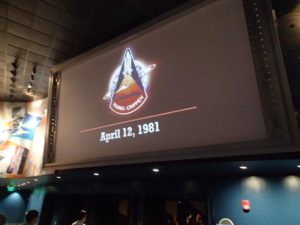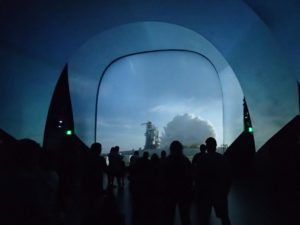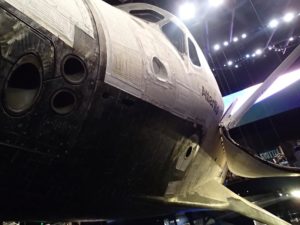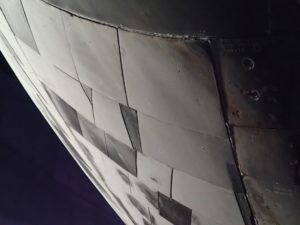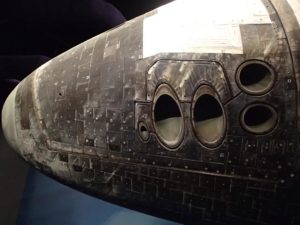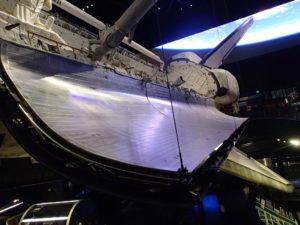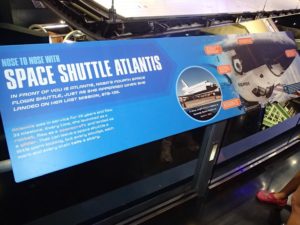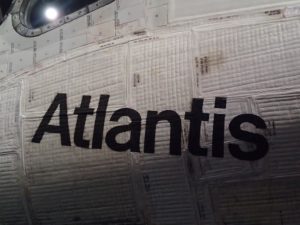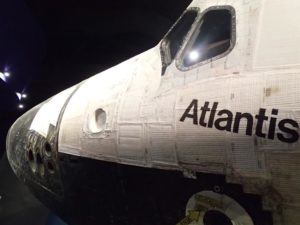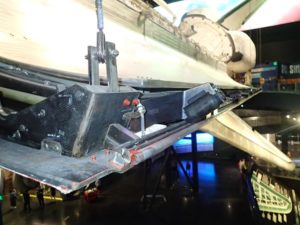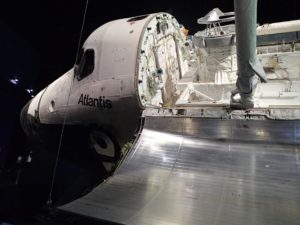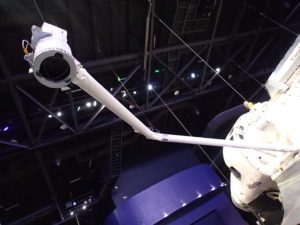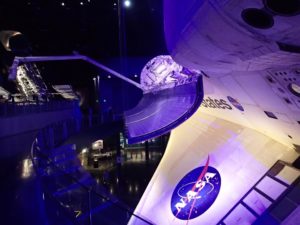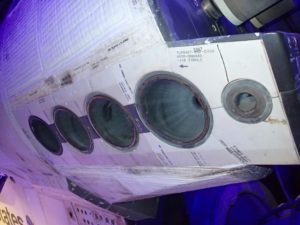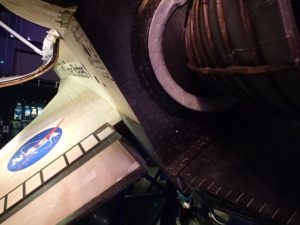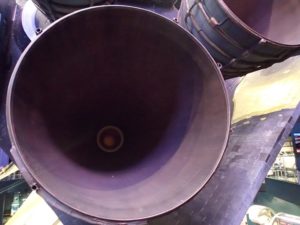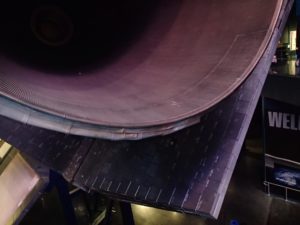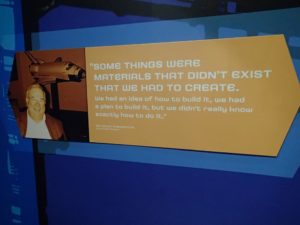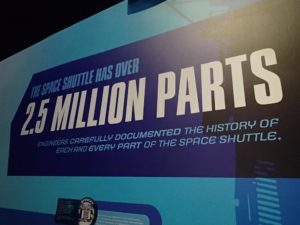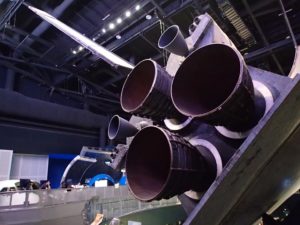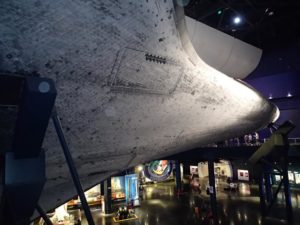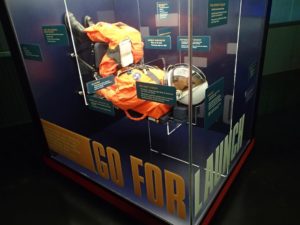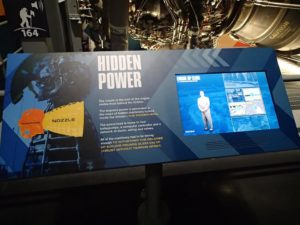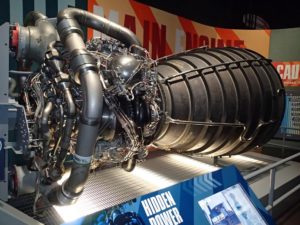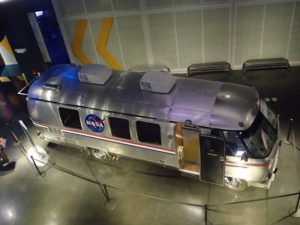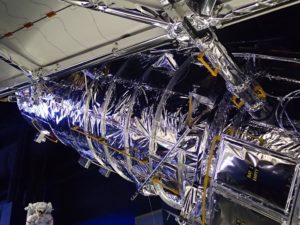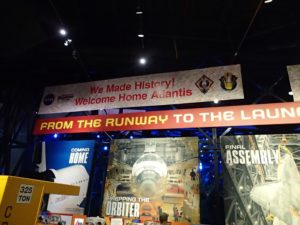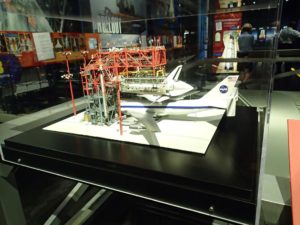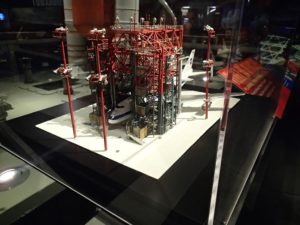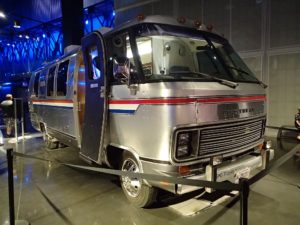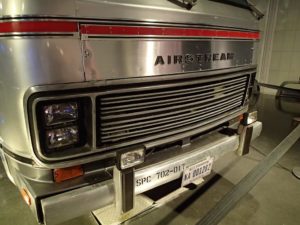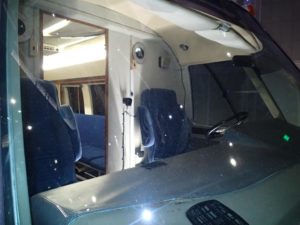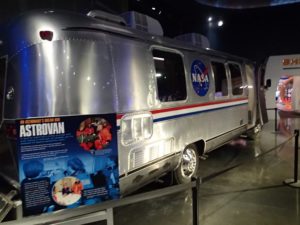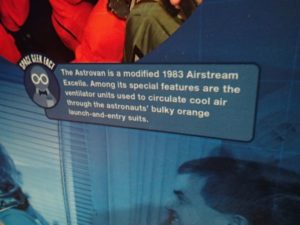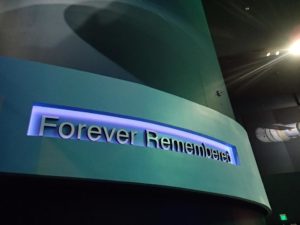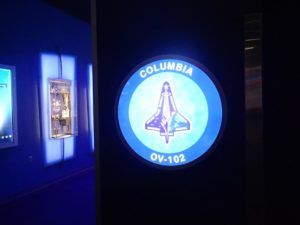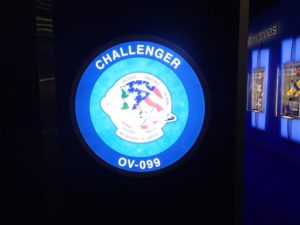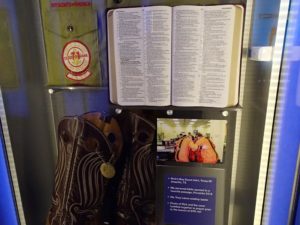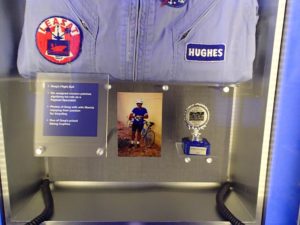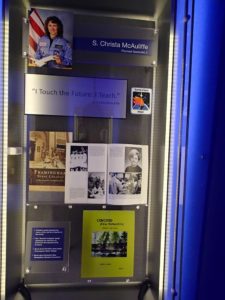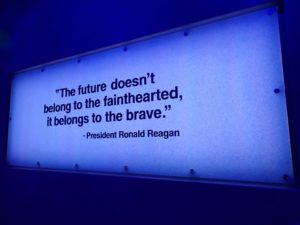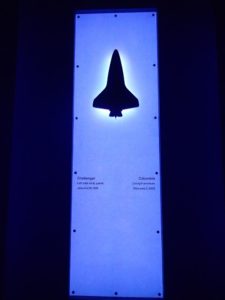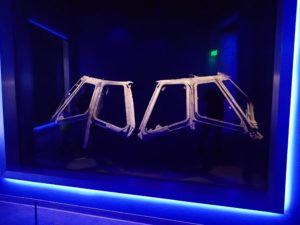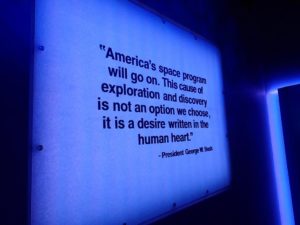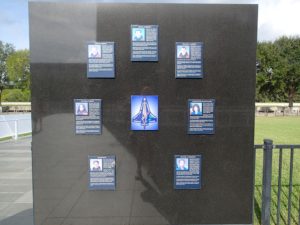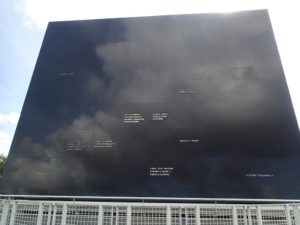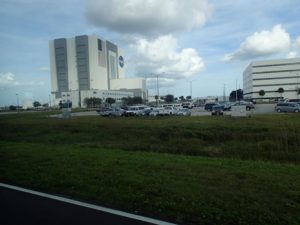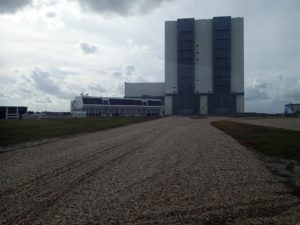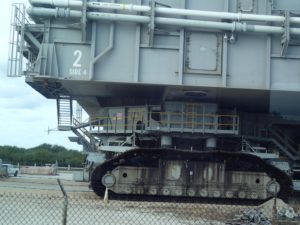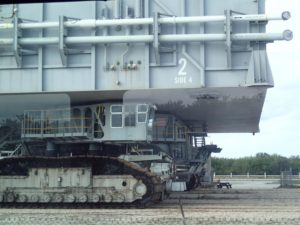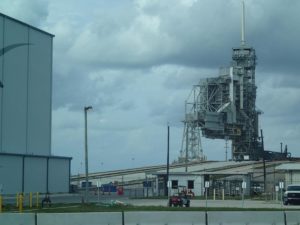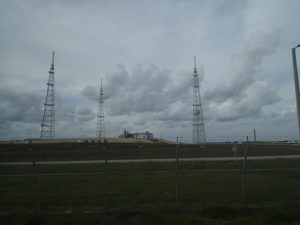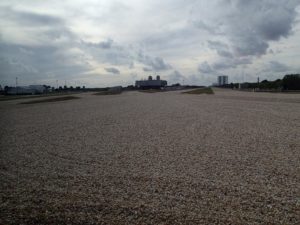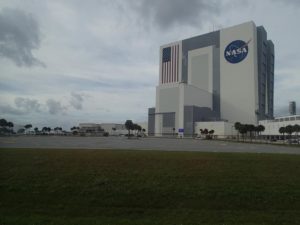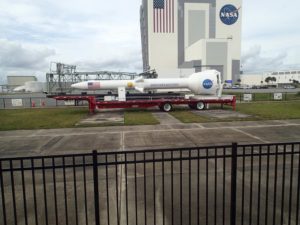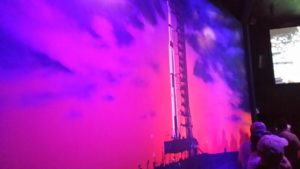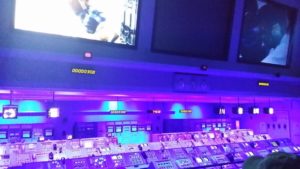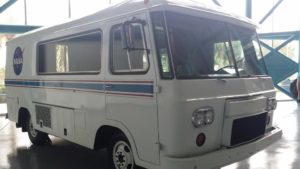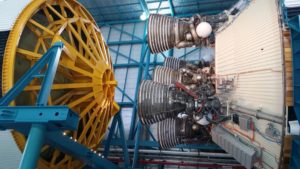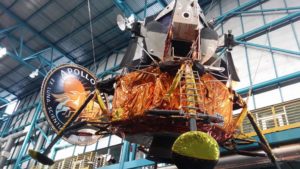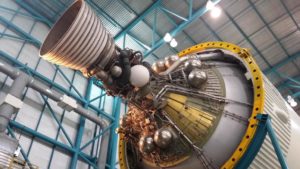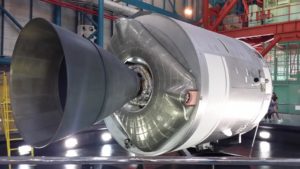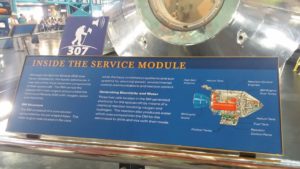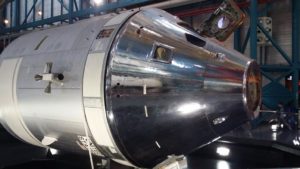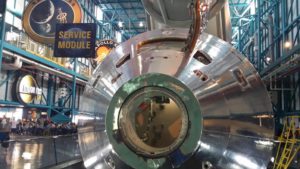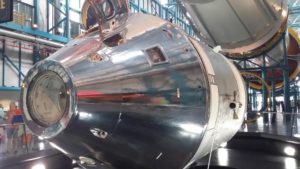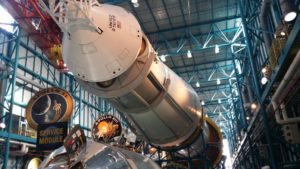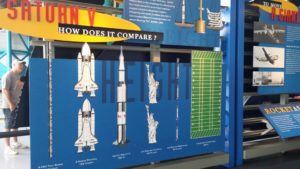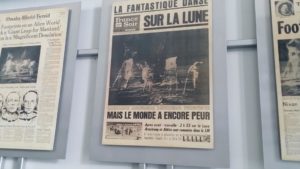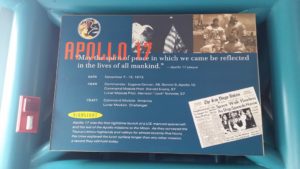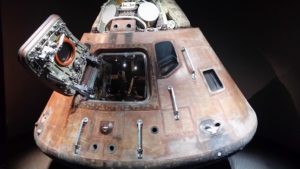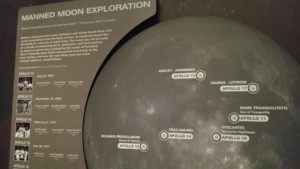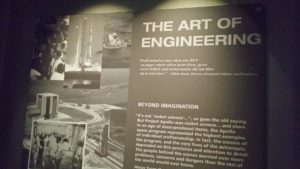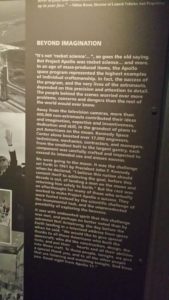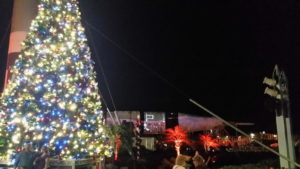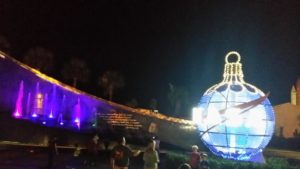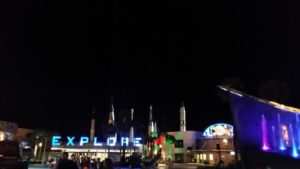New Year’s Day 2016: Since we were already in Florida’s Space Coast – having just bought our “new to us” motorhome – we couldn’t pass up the opportunity to visit the Kennedy Space Center! Truth be told, I think my wife the NASA-buff was more excited to go than the kids 🙂
While the rest of the world was probably sleeping in from a late-night party, we made the extra effort to arrive right after opening time (9am). Judging by the size of the parking lot, it was apparent this place can get very busy in peak season. However, for the first day of the year, the crowds were almost nonexistent. Parking (an extra fee, watch out) was easy and the ticket booth and security check were quick.
- Remember where you park at KSC!
- Huge parking lot
- Parking at KSC
- Get tickets!
- Security checkpoint
We generally followed the recommended “if you only have one day” itinerary, and it was well organized. The Kennedy Space Center website is a good resource for getting to know what you’ll see before arrival. Starting in the Rocket Garden literally gives you perspective on things to come…
The scale of the Apollo 11 bridge, together with the imposing size of the F-1 rockets foreshadow just how enormous the Saturn V exhibit will be!
- Rocket garden
- Rocket garden
- If only rocket science were simple
- Apollo 11 service arm description
- The Apollo 11 service arm
- F-1 engine (Saturn V)
- F-1 engine info
After the Rocket Garden, we passed through various displays before seeing the Atlantis Space Shuttle. There is a kids playground which we thought would come in handy, but our 5 and 8 year old were actually kept very busy with all the other exhibits. The replica of the Rover made for an interesting stop, as well as the sneaky astronaut in costume who the kids thought was a statue. That was a fun surprise!
Stopping at the Lego Mars Rover, I wondered just how long it took to assemble the thing. On our way to the Atlantis, we stood amazed at the giant granite constellation ball supported by water pressure. We had a little fun spinning it in different directions and checking our knowledge of the constellations.
- Playground at KSC
- Rover replica
- Mars Rover – made from legos
- Mars “lego” rover info
- Huge granite ball – supported by water
- The granite ball base
Approaching the Atlantis exhibit, I began to appreciate the scale of the machinery needed to launch a small crew of astronauts and various equipment into space – but I was not prepared for the emotional impact of the exhibit itself.
First you wind your way through a number of wall murals, up to the top floor through a series of ramps, which I assume are meant to “hold” the throngs of people waiting to enter during the busy season. Instead, we were able to reach the top quickly and waited with a small crowd to enter the “presentation” – a dramatic re-enactment of the circumstances and events leading up to the shuttle program, culminating with a 360 degree audio and video experience of the first shuttle launch, breaking the silence of a calm early Florida morning. With the end of the presentation, one of the “curtains” is raised and right in front of you is the Atlantis shuttle – looking as if it had just landed from space.
- Entrance to the Altantis exhibit
- Gigantic!
- Beginning of the Atlantis presentation
- Remembering the Columbia
- Shuttle launch re-enactment
- What’s behind the curtain?
- The shuttle Atlantis
At this point I was simply in awe. The balconies of the second floor are arranged such that you can almost touch the shuttle, and you are certainly close enough to see the scars from space duty. Having grown up with the shuttle, and watching launches on TV as a kid in the middle of a school day – it brought back memories.
Further reinforcing the impact of the exhibit was how they intertwined the engineering theme into many displays. At one such example which explained the shuttle engines, you can scroll through various video accounts of actual NASA staff members describing their role to prepare for a launch. Overall, a great example of exhibits designed to inspire kids to a career in engineering.
I thought the “re-entry slide” was a great idea by the exhibit designers. What a great way to show people the steep re-entry path of the shuttle for landing – and it was fun too!
- What Astronauts wear
- Detailed video presentations on the shuttle engines
- Shuttle engine exhibit
- Hubble telescope replica
- Hubble telescope info
- Peek at the Astrovan
- Hubble telescope replica
- The re-entry slide!
- Atlantis banner
- Model of the shuttle on transport
Being all about RVs, I had to stop for a few minutes and check out the Astrovan. This was a 1983 Airstream, re-purposed for astronaut transport duty. Interesting piece of history in many ways.
- The Astrovan!
- Astrovan info
- Astrovan – based on an Airstream RV
After all the “wow factor” of the various displays, you are then reminded of how it all started:

The model featured in the Atlantis presentation
We were then reminded that space exploration is not without risk – for all the incredible engineering feats and accomplishments, there were accidents where people lost their lives.
What a somber moment. What struck me the most were the Columbia cockpit windows, as eyes staring back at us.
- Remembering the Challenger and Columbia crews
- Commander Rick Husband
- Crew praying before the flight
- Gregory Jarvis
- Gregory Jarvis – bicycle enthusiast
- S. Christa McAuliffe
- Ilan Ramon
- Ilan Ramon – Israel’s first astronaut
- Shuttle memorial
- Memorial of shuttle remains
- Columbia cockpit windows
- Challenger left side body panel
We then visited the Astronaut Memorial outside, remembering all those who died in the many space programs.
- Outdoor astronaut memorial – illuminated at night
After the impact of the Atlantis experience, we took a break for lunch at one of the cafes on site. It wasn’t cheap, but wasn’t the highway robbery that one would expect from a Disney trip for example.
Next we hopped a bus for a tour of the facility. A better word might be enormous complex. That was two words, but hopefully you get the point – this place is huge and sprawling!
One example is the Crawler – which was used to transport shuttles from the Vehicle Assembly Building to the launchpads. Nothing here is small!
- Bus ride!
- Vehicle Assembly Building
- VAB and crawler path
- Crawler transporter
- SpaceX pad
- SLS pad – lightning towers
- Miles of gravel for the crawler
- VAB
- NASA Orion
The bus tour then makes a stop at the Saturn V “building.” Or hangar – or exhibit. Just don’t have the words for how big all this stuff is!
Similar to the Atlantis experience, you begin with a presentation of the Saturn V program and are reminded of Sputnik and the events leading up to our “landing a man on the moon.” The doors open up, and there you are – at the business end of a Saturn V – stretching for what seems like a mile away.
- Saturn V / Apollo presentation
- Those huge engines fill the frame!
Don’t miss this piece of history – what must have been a precursor to the Astrovan!
- Astronaut RV
Each stage, each module – just about every major piece of equipment – is described in detail from one end of the rocket to the other. Overhead are the emblems for each mission, and below are plaques listing major accomplishments / events of each mission.
There is a cafe here as well, just in case you changed up your itinerary and found yourself hungry while away from the main facility!
- Saturn V stage 1
- Saturn V stage 2
- Between stage 1 and 2
- Lunar Module
- Saturn V stage 3
- Service Module
- Service Module info
- Command module
- Command module
Several smaller displays are placed throughout; the size of the Saturn V compared to the Shuttle; news of the Apollo 11 moon landing in many languages.
I thought it fitting to capture the description “plaques” of two particular missions – the famous Apollo 11 moon landing, and then the very last moon mission – Apollo 17. Logically, the latter was placed at the very end of the rest, but seemed isolated. Take the time to read the mission accomplishments – you’ll find out that it may have been last, but not least.
- The size of the Saturn V compared
- News of Apollo 11 in French
- News of Apollo 11
- First steps on the moon
- Our last steps on the moon
Once we walked the Saturn V from end to end, we turned to a side room to see an actual command module which had been all the way to moon orbit. The scars of space duty are evident.
- Apollo 14 “Kitty Hawk” command module
More descriptive displays – each moon landing; the vital role engineers played in our moon accomplishment.
- Moon landing sites
- Engineering into space
The bus took us back to the main facility after the Saturn V and after some space dots ice cream we caught the setting sun over the rocket garden.

Sunset at KSC
One more thing to do – the IMAX movie “Journey to Space 3D.” I thought we had seen everything at KSC but this movie was a great way to finish off the day. It took you through NASA’s past, present and vision for the future.
By this time we were DONE. We missed one or two things, but we had seen almost everything. My wife had a blast, and the kids didn’t have any meltdowns (I think they actually enjoyed it!). We made our way to the exit as we enjoyed KSC all lit up at night for Christmas.
On the way back we stopped at Molly’s Seafood Shack for dinner. That was a hit! Tired and full, we drove back to the campground and hit the sack in our “new” motorhome. Another adventure in the books!


